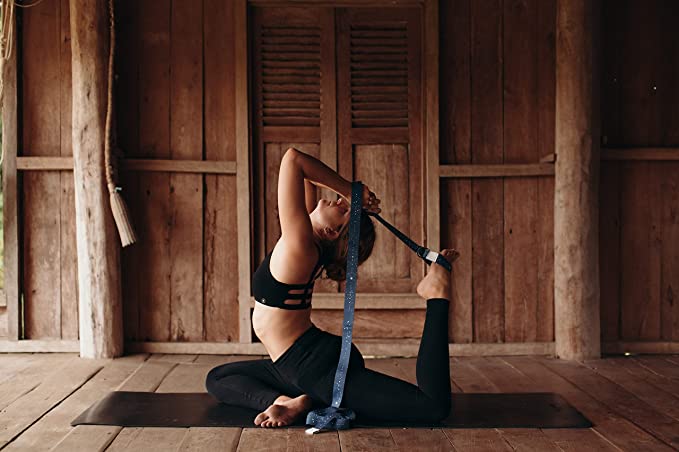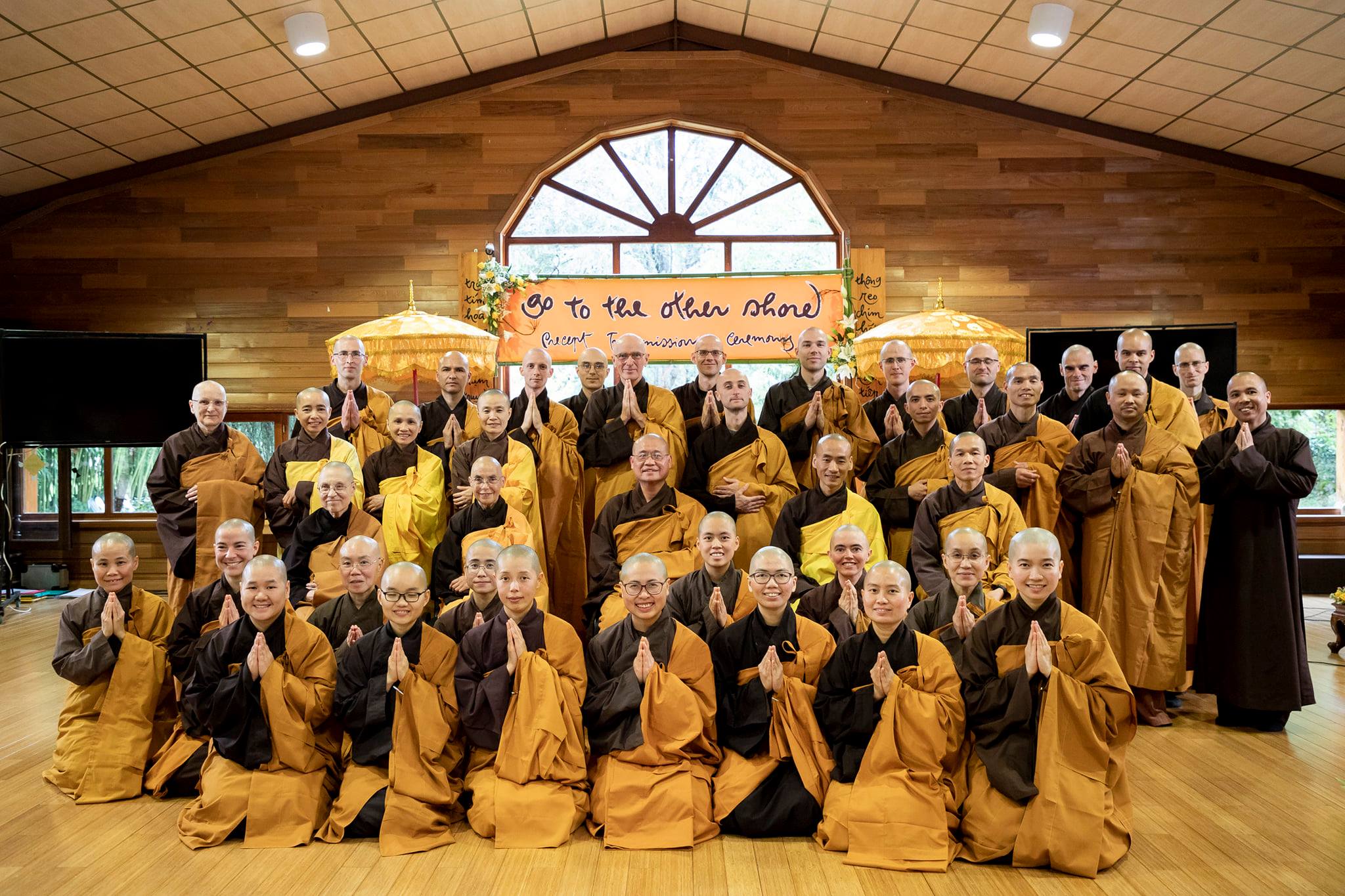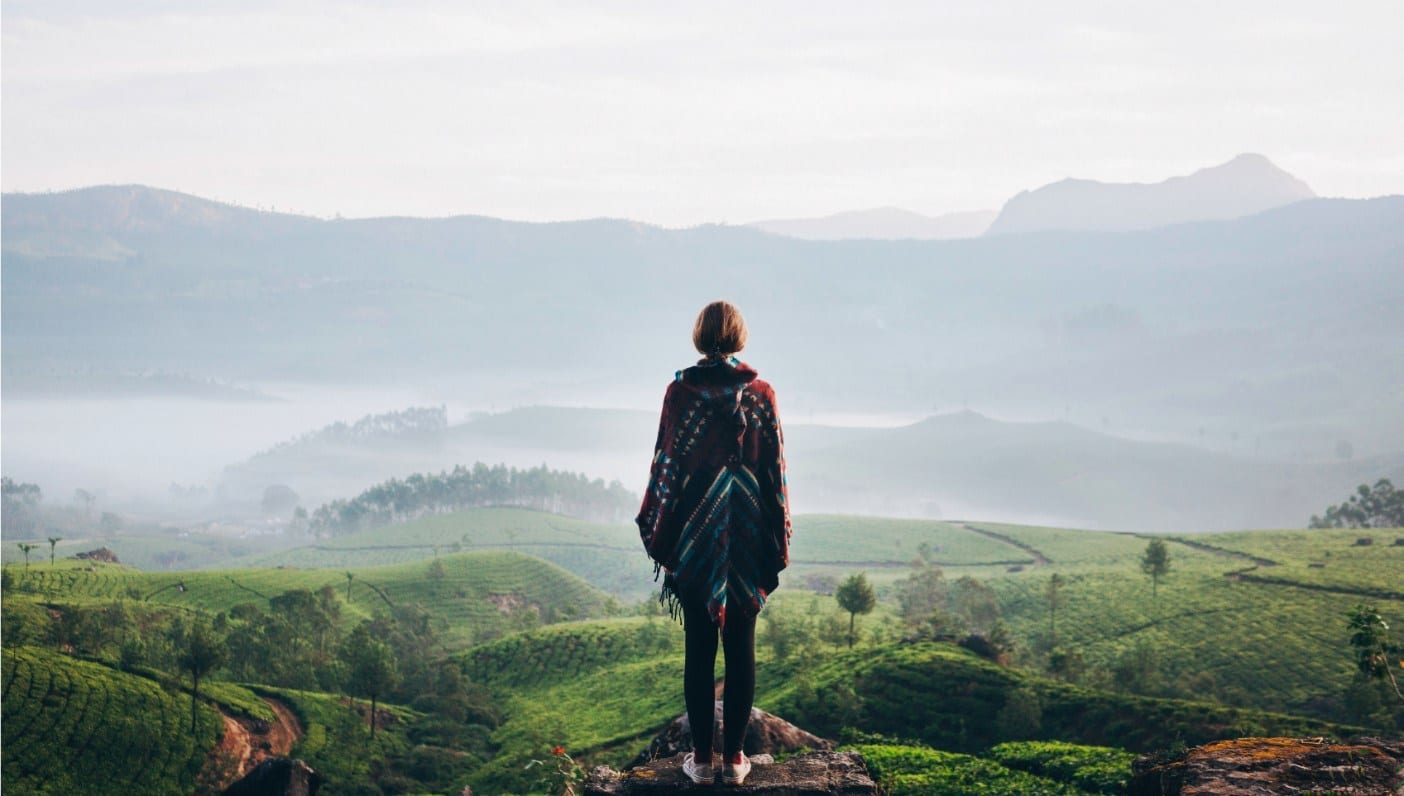How to Use a Yoga Strap: 7 Yoga Strap Stretches and Benefits
The post How to Use a Yoga Strap: 7 Yoga Strap Stretches and Benefits appeared first on The Yoga Nomads.

When you can’t quite reach your toes in a Forward Fold or clasp your hands behind your back in Cow Face Pose, a yoga strap helps you still get a good stretch without sacrificing alignment.
These under-utilized yoga props are like the unashamed “training wheels” of a yoga practice. A yoga strap can help less flexible beginner yogis enjoy the benefits of poses they may be intimidated by. At the same time, yoga straps can deepen the intensity and challenge of intermediate and advanced asanas.
A yoga strap has profoundly improved my personal practice by helping me work toward Dancer Pose and King Pigeon Pose without overextending my back or hip flexibility. Once I introduced straps into my yoga classes, I started to see students make huge strides toward their goals as well.
If you’ve been wanting a deeper stretch, better alignment, to start exploring more advanced poses, perhaps it’s time you gave this simple, affordable tool a try.
What is a Yoga Strap?
Think of a yoga strap as the link between where you are and where you want to be in your yoga practice. In its most basic form, a yoga strap adds length. It helps elongate your muscles and tendons by bridging the gap in your flexibility.
This multi-stitch reinforced piece of fabric may include loops or rings to make it easier to hold onto. Most straps have an adjustable length and/or a quick release buckle.
Benefits of a Yoga Strap
The most important benefit of a yoga strap is lowering your risk of injury on the mat. At the same time, yoga straps can also help:
Maintain alignmentImprove flexibility without riskIncrease your range of motionStrengthen and lengthen musclesAdvance into challenging posesPrevent overextension
With a yoga strap, you can pull yourself a little closer toward touching your toes in a Forward Fold without crunching your back downward. It can also help extend your arm toward your leg in Standing Hand to Big Toe pose without destabilizing your balance and alignment.
You can adjust the strap to a shorter length to help you practice challenging hand binds without over-twisting your back. Moreover, you can use a yoga strap to strengthen your shoulders, arms, glutes, and core.
With gentle tension, the strap can still facilitate deep relieving stretches. It ensures you stay in alignment while trying new poses, yet still helps you enjoy that feeling of accomplishment from advancing in your practice.
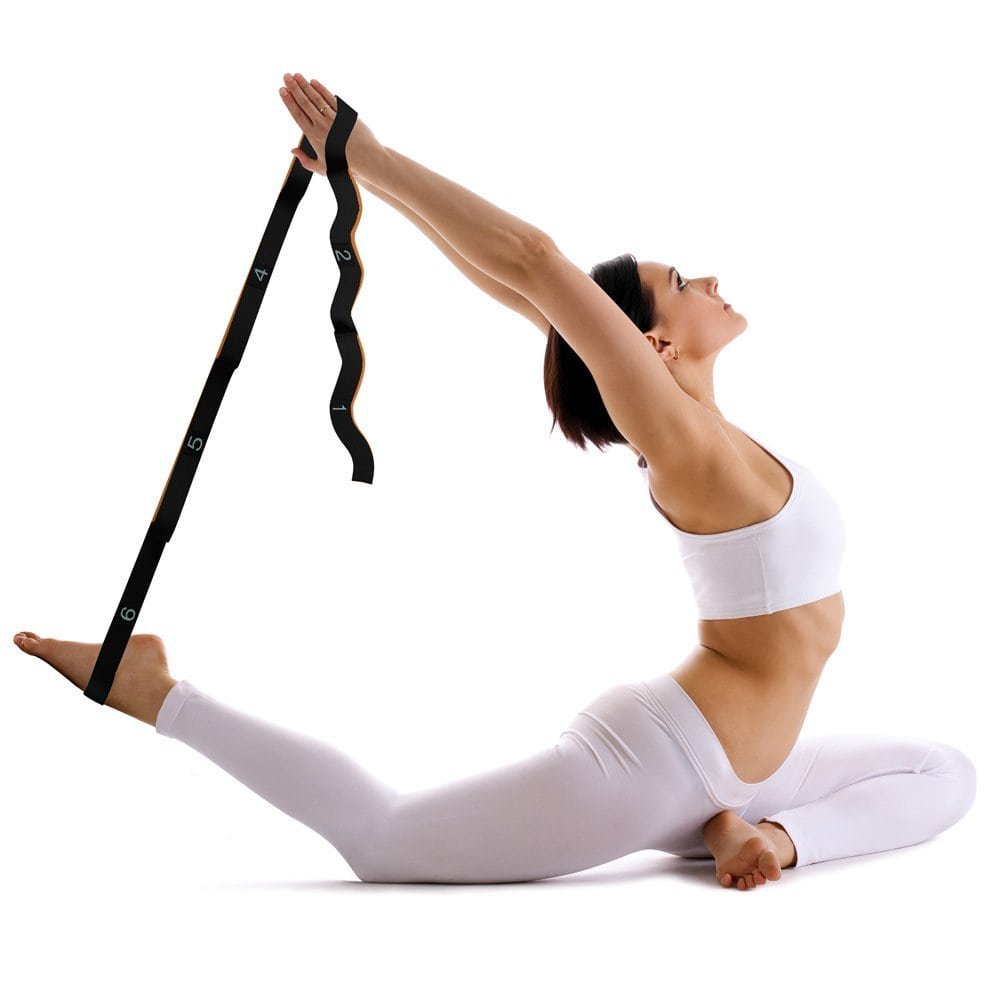
Top 7 Best Yoga Straps
Yoga straps are simple tools, but they aren’t all created equal. Nobody wants to run the risk of losing their grip on a strap during an assisted Dancer’s Pose.
At the same time, you don’t want a yoga strap that gives you callouses from holding so tight to a rugged texture (trust me, it’s not fun).
Depending on your goals and your dimensions, certain straps may be more useful for you than others. Yoga straps can have a variety of hand loops, rings, quick release mechanisms, and fabric blends made for different uses.
We did a super in-depth review of the Top 7 Best Yoga Straps in a previous article, but here are the highlights for anyone in the market to try out this prop:
Our Favorite Pick: Lululemon No Limits Stretching StrapBest Simple Option: Manduka Unisex Align Yoga Strap 8′Best Extra Long Strap: Hugger Mugger D-Ring Yoga Strap 10′Best Gripping Loops: Sport2People Yoga Strap for StretchingBest Quick Release Buckle: Hugger Mugger Quick Release Yoga StrapBest Style Strap: Yoga Design Lab Yoga StrapBest Versatile Elastic Strap: Yoga Evo Elastic Stretching Strap With LoopsHow to Use a Yoga Strap: 7 Strap-Assisted Yoga Poses
There are probably a million ways you could use a yoga strap, but these are our top 10 favorite strap-assisted asanas. You can use any type of yoga strap for these postures, but our favorite is the Lululemon No Limits Stretching Strap because it is easy to adjust, aesthetically-pleasing, soft to grip, and super durable.
Seated Forward Bend (Paschimottanasana)
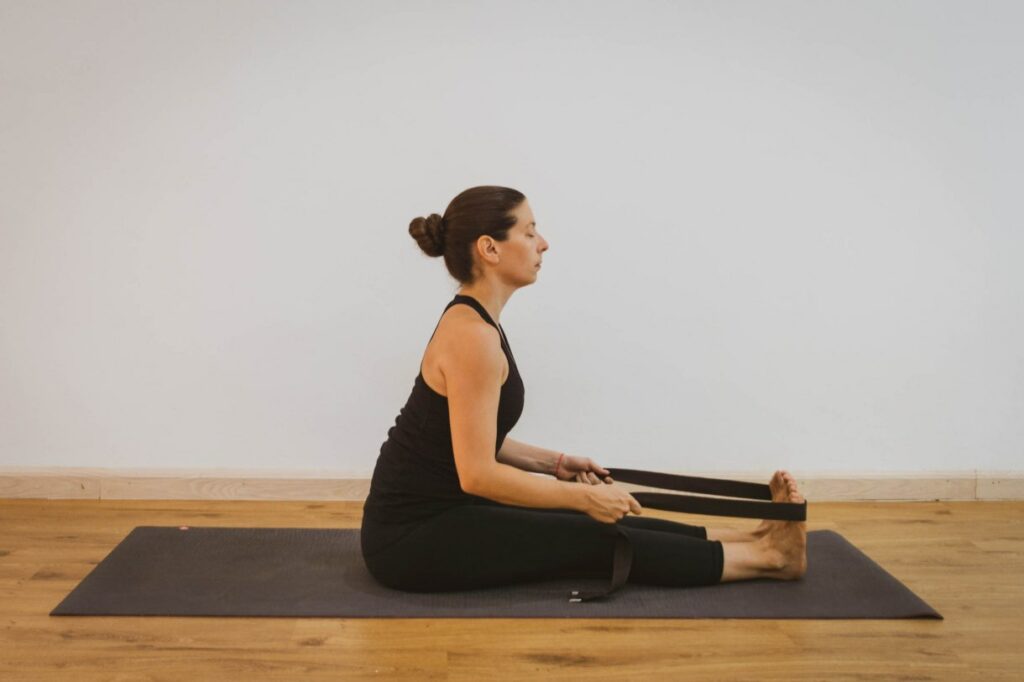
Touching your toes can be really difficult if you have tight hamstrings. This pose often leads to slumping the spine over in an uncomfortable arch that can lead to injury. By adding a yoga strap, you can keep your spine neutral and strong while still getting a deep hamstring stretch.
How to Do Seated Forward Bend with a Yoga Strap
Begin in a seated position with your legs straight out in front of you and ankles touching. Instead of rounding your back downward to touch your toes, start with the legs bent. Loop your yoga strap around the bottom of your feet and grab the strap securely in each hand.
Keep your chest listed and press the tops of your thighs into your stomach. With an exhale, gently pull on the strap as you slide your feet out toward a straight position. The strap will help you keep your spine long and neutral.
Head to Knee Pose (Janu Sirsasana)
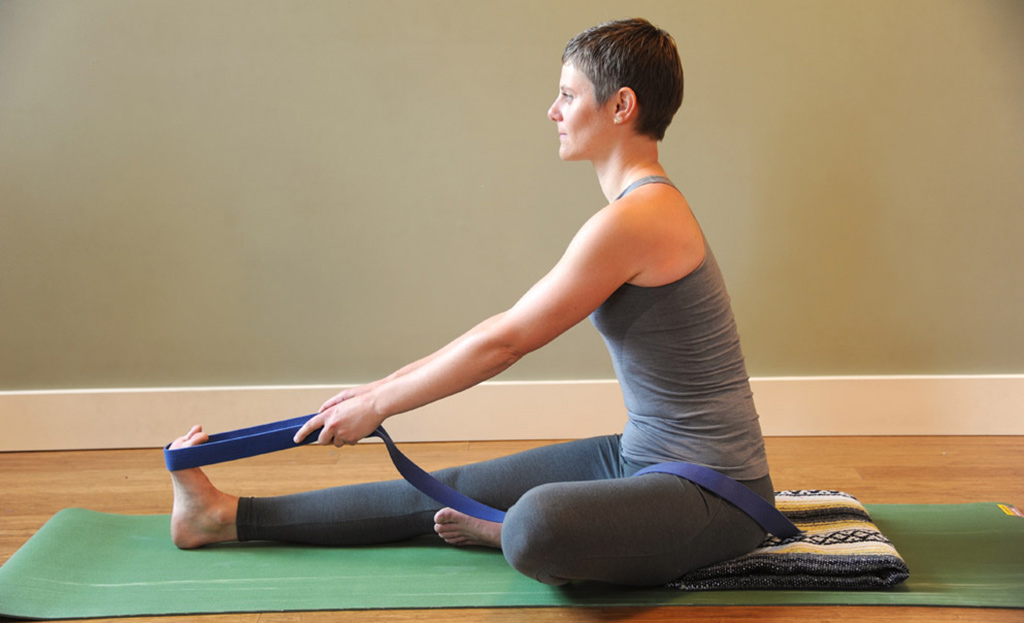
This intermediate level pose also requires some major hamstring flexibility. If you aren’t quite there yet, you can use a yoga strap to lengthen your spine and leg simultaneously.
How to Do Head to Knee Pose with a Yoga Strap
Begin in a seated position with one leg extended out and the other leg bent out to the side. Loop the strap around the ball of the extended left foot and lightly bend the knee. Hold the strap in both hands with your upper body and gaze facing forward over the extended leg.
With an inhale, lengthen your spine and engage your core. Slowly straighten your left leg, using the strap to gently add tension and flex the foot for a hamstring release. Careful not to curve or bend the spine over the leg. Maintain a flat back. Repeat on the other side.
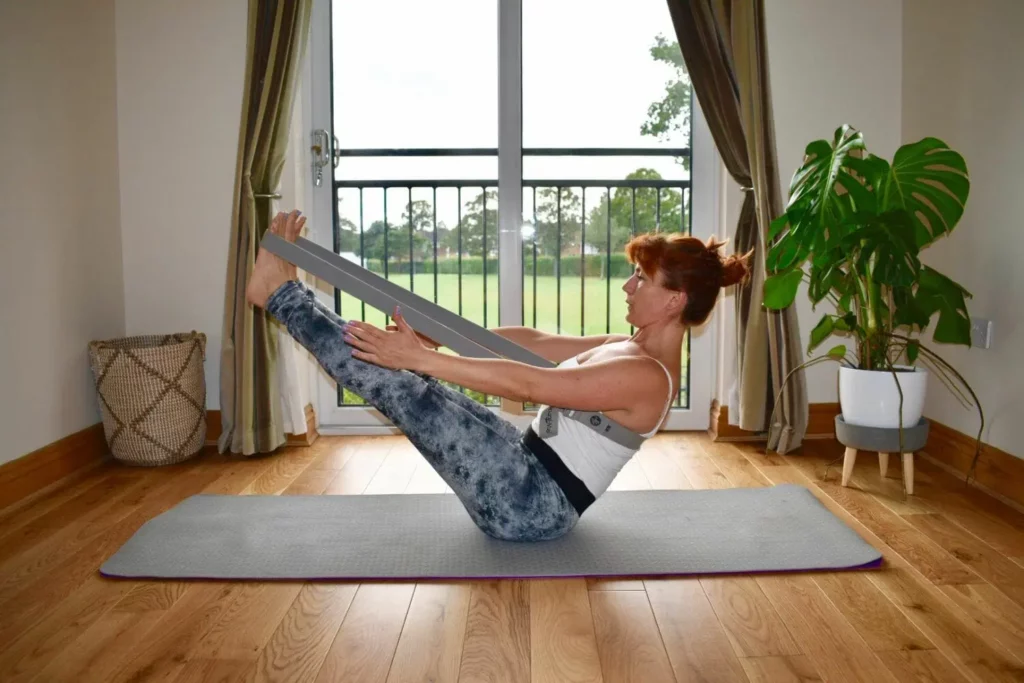
If you want to build core strength, but don’t quite have the balance for a full Boat Pose, a strap makes things a lot more accessible. Plus, this assisted pose drastically cuts down on lower back pain while attempting the full boat position. The strap will reduce tension in the spine and help keep your legs fully straightened.
How to Do Boat Pose with a Yoga Strap
Begin in a seated position with your legs outstretched in front of you. Loop the yoga strap around your upper back below your armpits. Bend your knees so that the other end can loop around the bottom of your feet. Inhale and straighten your spine while lifting the chest.
Begin slightly leaning back onto your tail bone with your abs fully engaged. Lift your legs up so that your body makes a “V” shape while balancing on your tailbone. Use the tension of the strap to balance and brace yourself. Extend the arms on each side of your legs with palms facing inward. Squeeze your core and breathe.
Long versus Short Strap Variation
Keep in mind that a longer strap with a fastener is necessary for this version of the pose. You can also use a shorter yoga strap in the same way as you did in Seated Forward Bend.
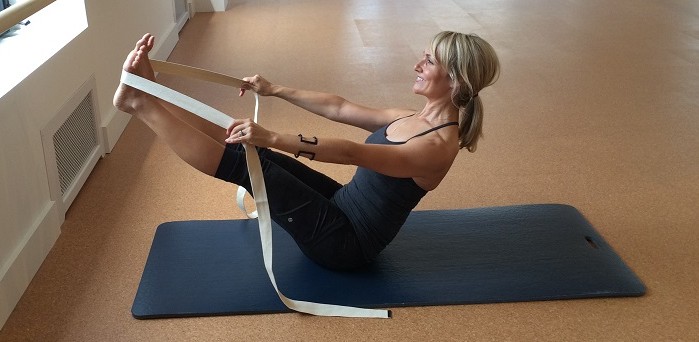
Hand to Big Toe Pose (Utthita Hasta Padangusthasana)
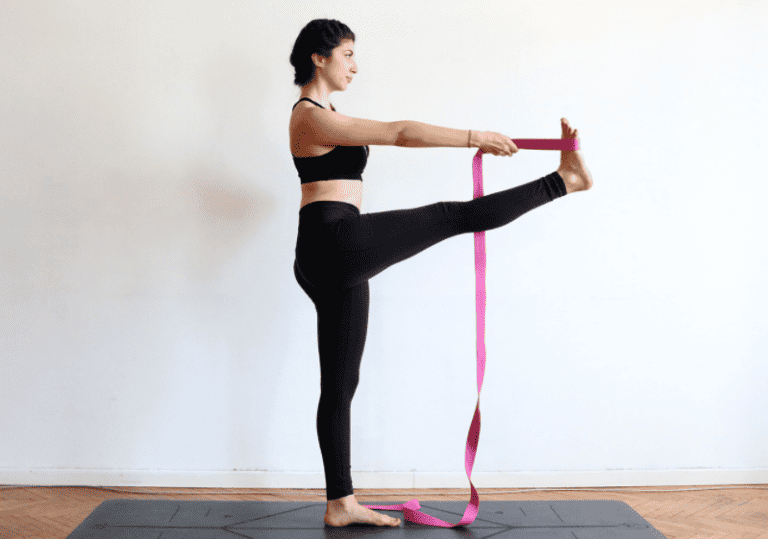
Balancing postures are hard on their own, but they can prove challenging with tight hips or less leg flexibility. This pose becomes remarkably accessible once you add a strap in. You can bring the leg straighter and the foot closer every time you practice, eventually reaching the final pose with your hand touching your big toe (as the name implies).
How to Do Hand to Big Toe Pose with a Yoga Strap
Begin in a standing position with feet hip-width apart. Bend your right leg and loop the strap flat under your right foot. Engage your core, stand up straight, and flex the glute of the standing leg. Begin kicking your right leg out in front of you, using the strap to balance and gently pull tension backward.
Keep the strap taught as you work your hand toward your foot. Maintain a neutral spine with your chest lifted, a strong core, and gaze forward.
Alternatively, you practice this asana while laying down in a reclined position with your leg and strap extended overhead.
Crow Pose (Bakasana)
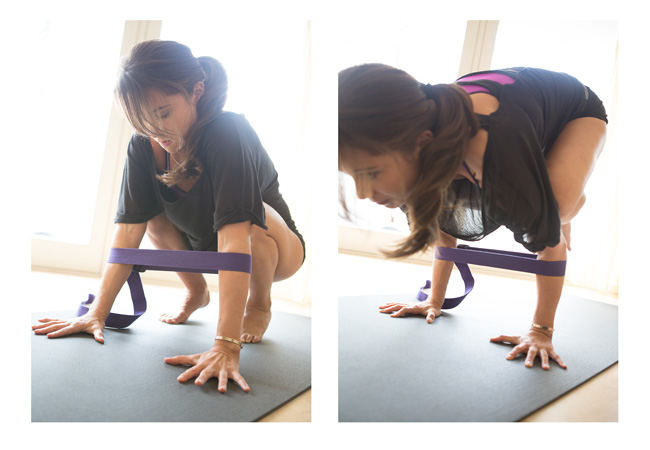
Believe it or not, a yoga strap can make arm balances like Crow Pose a lot easier for beginners. The reason is that the strap helps you maintain the proper distance between your arms by placing tension on the elbows.
How to Do Crow Pose with a Yoga Strap
Begin in a tabletop position with arms shoulder-width apart. Buckle and loop your strap securely around your arms just below the elbows. Whether you prefer to enter Crow Pose from Forward Fold, Downward Dog or from a crouching position, begin pressing your knees into the back of your arms and firmly engaging your core as you lean forward into the full balancing position.
If you’re still working on the full expression, just practice pressing the knees into the armpits while slowly lifting one toe at a time from the ground. Keep tension on the arms and the strap to maintain balance.
Cow Face Pose (Gomukhasana)
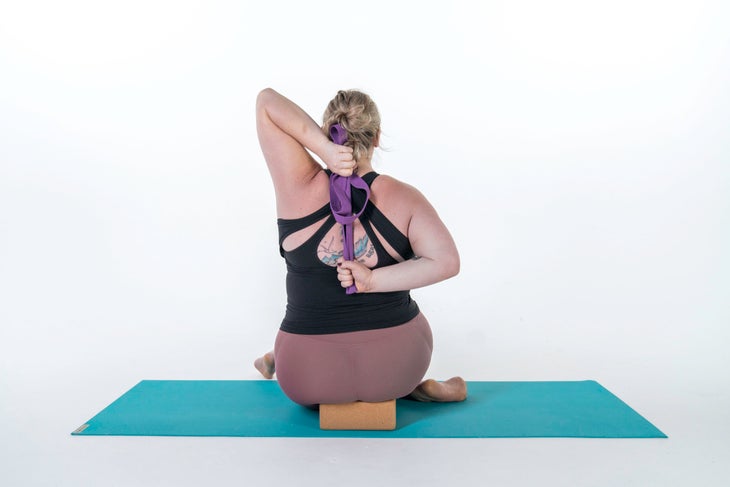
Tight shoulders affect your life more than you think. A lack of flexibility between the shoulder blades can lead to upper back pain and reduced ability to practice many yoga poses.
The arm portion of Cow Face Pose is pretty intimidating for anyone with reduced joint mobility or a previous shoulder injury. A yoga strap helps lessen the strain while keeping the spine long.
How to Do Cow Face Pose with a Yoga Strap
You can practice the shoulder stretch of Cow Face Pose from a simple seated position or with the standard stacked knees. Begin with the strap in one hand. Reach that hand up toward the sky and then bend at the elbow to let your strap drop down along the back of your spine.
Gently rotate your other arm downward and around to reach for the bottom of the strap behind your back. Grab the strap and slowly work your hand upward as you open your chest and sit up as straight as possible. The hands will be reaching toward each other as the shoulders externally rotate.
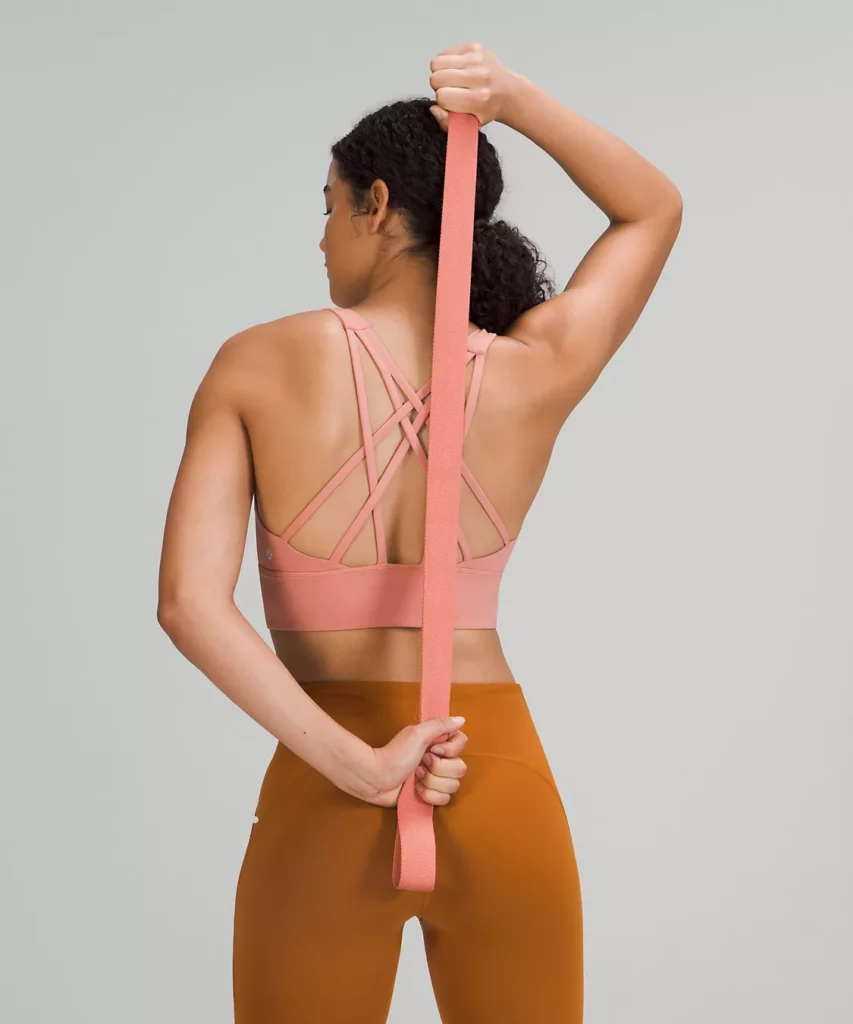
Dancer’s Pose
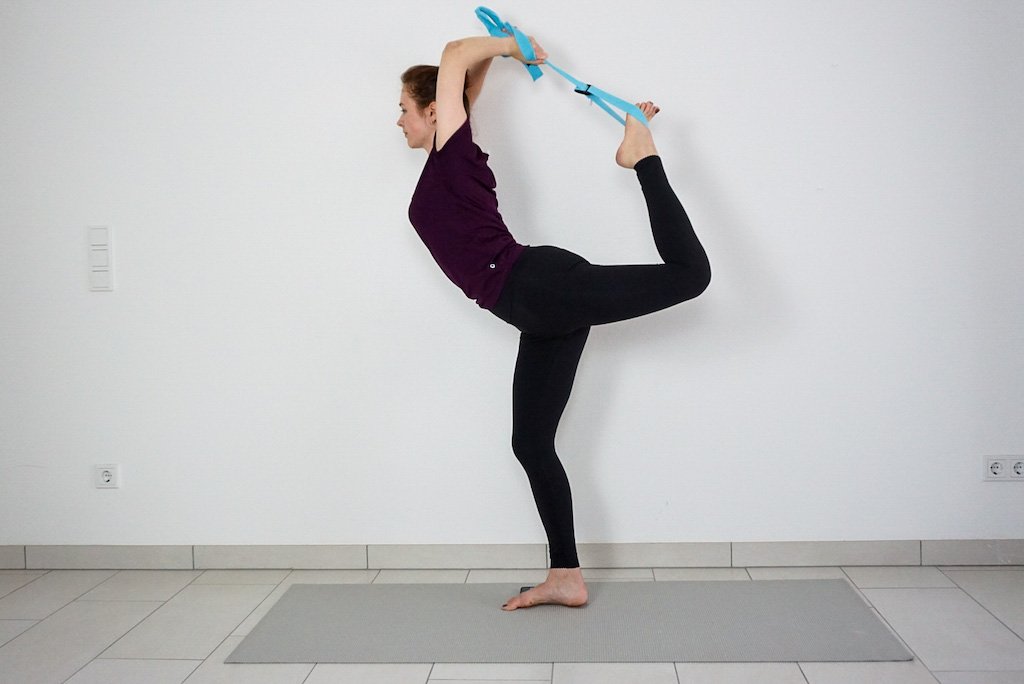
Pretty much every yogi dreams of reaching a beautiful full Dancer’s Pose. But it requires some major back-arching flexibility that most of us don’t quite have in our practice. Once again, you can use a yoga strap as a secret cheat code. You can get all the heart-opening benefits of a backbend without risking hurting yourself.
How to Do Dancer’s Pose with a Yoga Strap
Begin in a standing position with your feet about shoulder-width apart. Shift your weight into one leg and fully engage the glute. Bend the back leg at the knee and loop your strap around the bottom of your foot. Bring your arms up overhead, gripping the strap with both hands.
Slowly kick back and upwards as you open your chest and stretch your back. Embrace your inner dancer as you breathe and hold the position, envisioning yourself one day grabbing your foot with your hands!
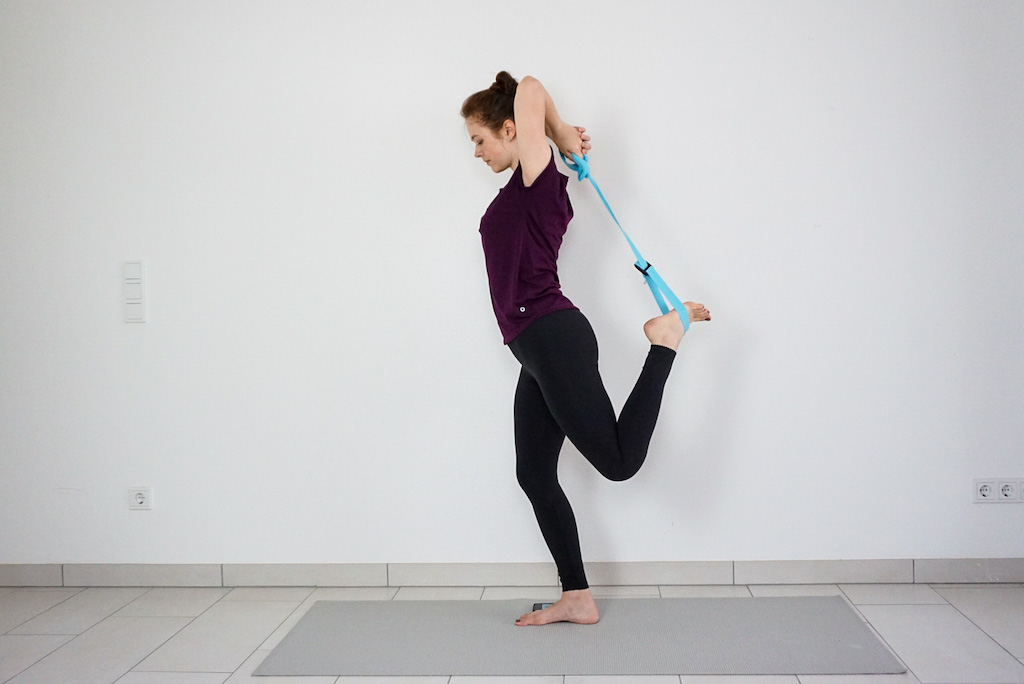
Closing Thoughts
At first glance, yoga straps may seem like a silly piece of fabric. But this is truly a great tool for beginner and advanced yogis alike.
If you’re trying to improve your alignment and flexibility while reducing your risk of injury, consider learning to use this simple prop.
At the end of the day, yoga is about easing into things rather than forcing them. Add some extra length to your spine and limbs while enjoying deeper stretches and working toward the full expression of your favorite asanas.
Namaste!

 Kass
Kass 